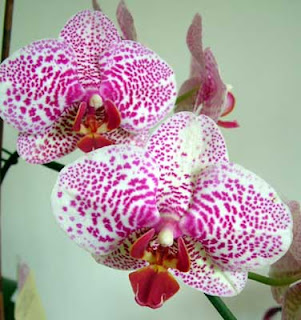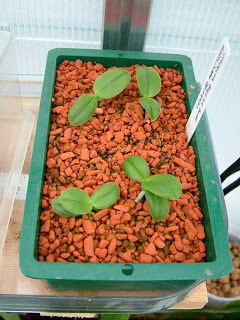 Phal. Firecracker Blue Martini
Phal. Firecracker Blue MartiniThe hydroponics systems are all functioning well and so far the various orchids are still thriving in their new conditions. Phalaenopsis Blue Martini is in bloom. Several of the Dendrobiums are about to bloom.
The Disa Safron offshoots which I treated with a 10% bleach solution earlier this year to combat rot have survived and are doing well.
The various seed sowings have produced mixed results and I guess some of my crosses didn't produce viable seed. Those that did are currently germinating and producing small leaves. I have trialled various sowing media and conditions. Some sown in moss, some in sand, some in peat/perlite mix. One batch are in the same conditions as the mother plants, the rest are in conventional seed propogators. It will be interesting to see the results later in the year. Currently all methods are producing seedlings.
The Blue Phal seedlings have been transferred into the main hydroponics tray.
Three trial sowings in with the mother plants















































